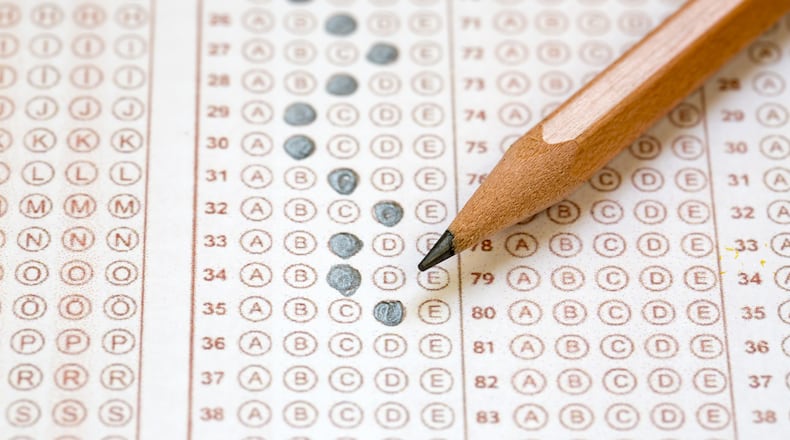A former venture capitalist turned education advocate, Ted Dintersmith is the co-author with educator Tony Wagner of the 2015 book “Most Likely to Succeed: Preparing Our Kids for the Innovation Era.”
The book and a corresponding documentary highlight schools that encourage innovation rather than rote memorization and give students problems to solve rather than worksheets to complete. His two decades in venture capital, including being ranked as the top-performing U.S. venture capitalist, taught Dintersmith the importance of innovation and entrepreneurship.
Dintersmith’s travels to 100 schools in all 50 states in the 2015-2016 school year led to his 2018 book, “What School Could Be: Insights and Inspiration from Teachers Across America.” (See my interview with him on his findings.)
In this guest column, Dintersmith assails the doomsday response to the latest round of scores from the National Assessment of Educational Progress.
By Ted Dintersmith
The National Center for Education Statistics recently released the 2022 National Assessment of Education Progress scores, often referred to as our “nation’s report card’' for the math and reading skills of our fourth- and eighth-grade students. In response to the 2022 scores, pundits are raising alarm bells about declines they describe as “plummeting,” “plunging,” “devastating,” “appalling,” and “unacceptable.”
Credit: Contributed
Credit: Contributed
Well, let’s take a close look at the data sparking this hysteria. The table below summarizes the results for NAEP tests administered in the winter of 2019 and then in the winter of 2022. Scores did in fact drop, but pay close attention to the magnitude of the declines:
2019 to 2022 Percentage Change
4th-Grade Reading 220 217 -1.4%
4th-Grade Math 241 236 - 2.1%
8th-Grade Reading 263 260 -1.1%
8th-Grade Math 282 274 -2.8%
The 2019 tests were administered to kids when school was free of disruption, in classrooms fully defined by No Child Left Behind test-prep priorities. In sharp contrast, the 2022 scores came on the heels of the most disrupted period in U.S. education history. Most kids spent long stretches out of school and its daily test-prep regimen.
Many experienced deep personal, family, and community trauma. Given these challenges, we should have braced ourselves for a 25% “plunge” in scores, and been ecstatic with tiny declines equivalent to missing just one question out of dozens. A more appropriate headline would be: “Despite Massive Disruption, Test Scores Barely Decline.”
Hysteria about these scores is amplified by the way sources present the NAEP data. In story after story, and report after report (including the NCES website), the graphs and charts use a truncated scale that makes tiny changes look monumental. Here’s a typical example from a respected education periodical’s report on NAEP scores (complete with its “Massive Drop” headline).
Credit: Contributed
Credit: Contributed
Indeed, a few-point drop looks ‘massive’ when the vertical axis is truncated to a range of just 10 or 20 points out of 300. But let’s be clear — these graphs reflect a “massive” distortion of scale, not a “massive” drop in scores. Presented straightforwardly, NAEP’s long-term Math and Reading trends tell a very different story. Scores have been essentially flat for decades, despite our education system’s maniacal and ever-escalating focus on test scores.
Credit: Contributed
Credit: Contributed
Test-score hysteria comes at a high price. It unleashes frenetic calls for more drills, worksheets, tutoring, and summer intensives, distracting us from the surge in real learning that we’d realize if we prioritized student engagement and teacher trust.
It takes focus off the real crises in U.S. education today — children with acute social and emotional challenges, teachers leaving the field in droves, state governors and legislatures issuing mind-numbing edicts, and parents behaving abhorrently in public forums. And it lays bare the damage inflicted on our kids by data-worshipping policymakers who, themselves, are numerically illiterate.
Worst of all, this national test-score angst stalls the innovation urgently needed to transform education from a model designed for the long-gone Industrial Era. When we push kids to grind out test-score gains, we crush their creativity, curiosity, audacity, agency, intrinsic motivation, and all traces of joyful learning — the very traits they need to thrive in the Innovation Era. As long as math and reading scores are the all-consuming goal of education, we will totally fail to prepare kids for fulfilling careers, responsible citizenship and happy, purposeful lives.
And that’s the education story we need to be reading.
About the Author
The Latest
Featured






